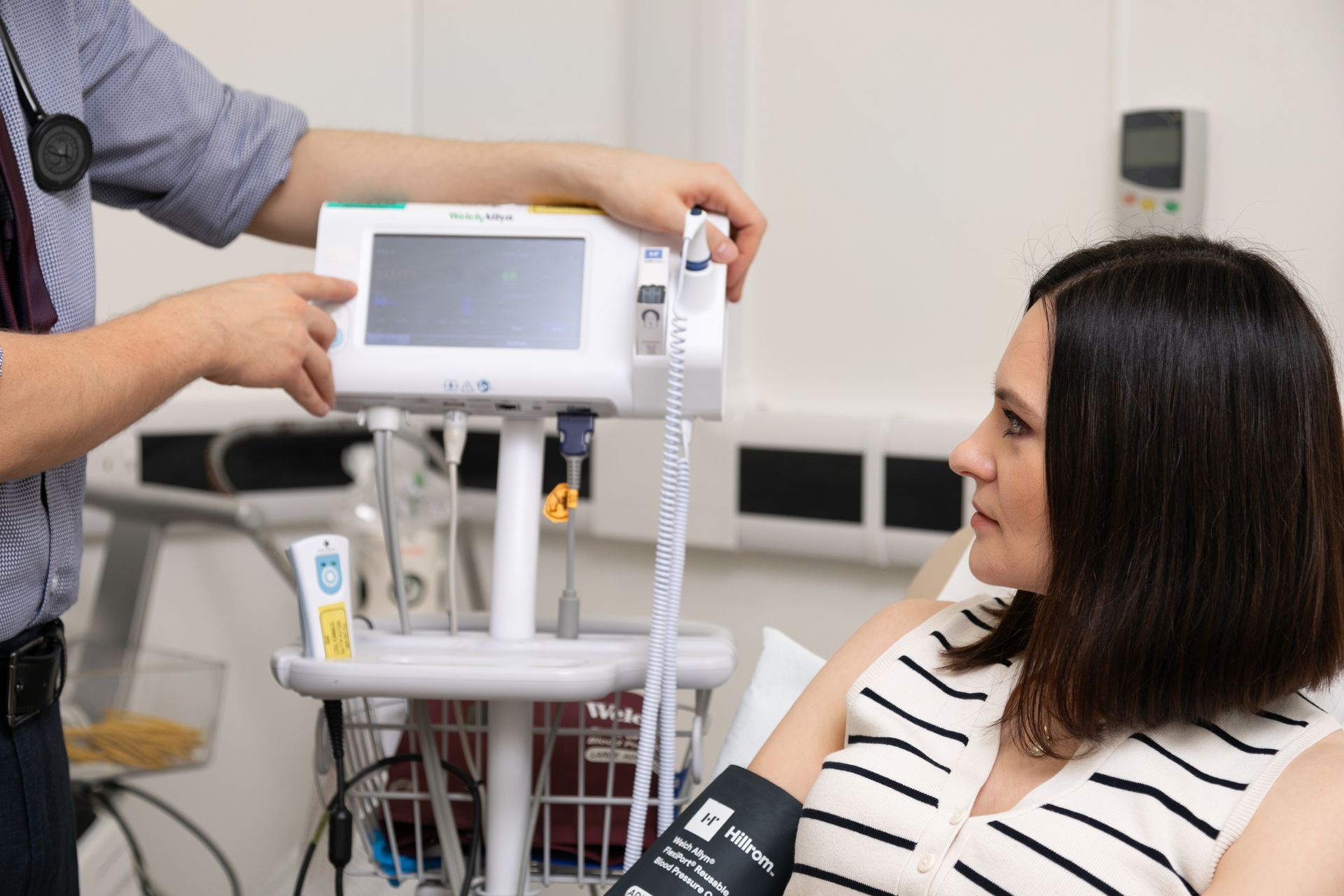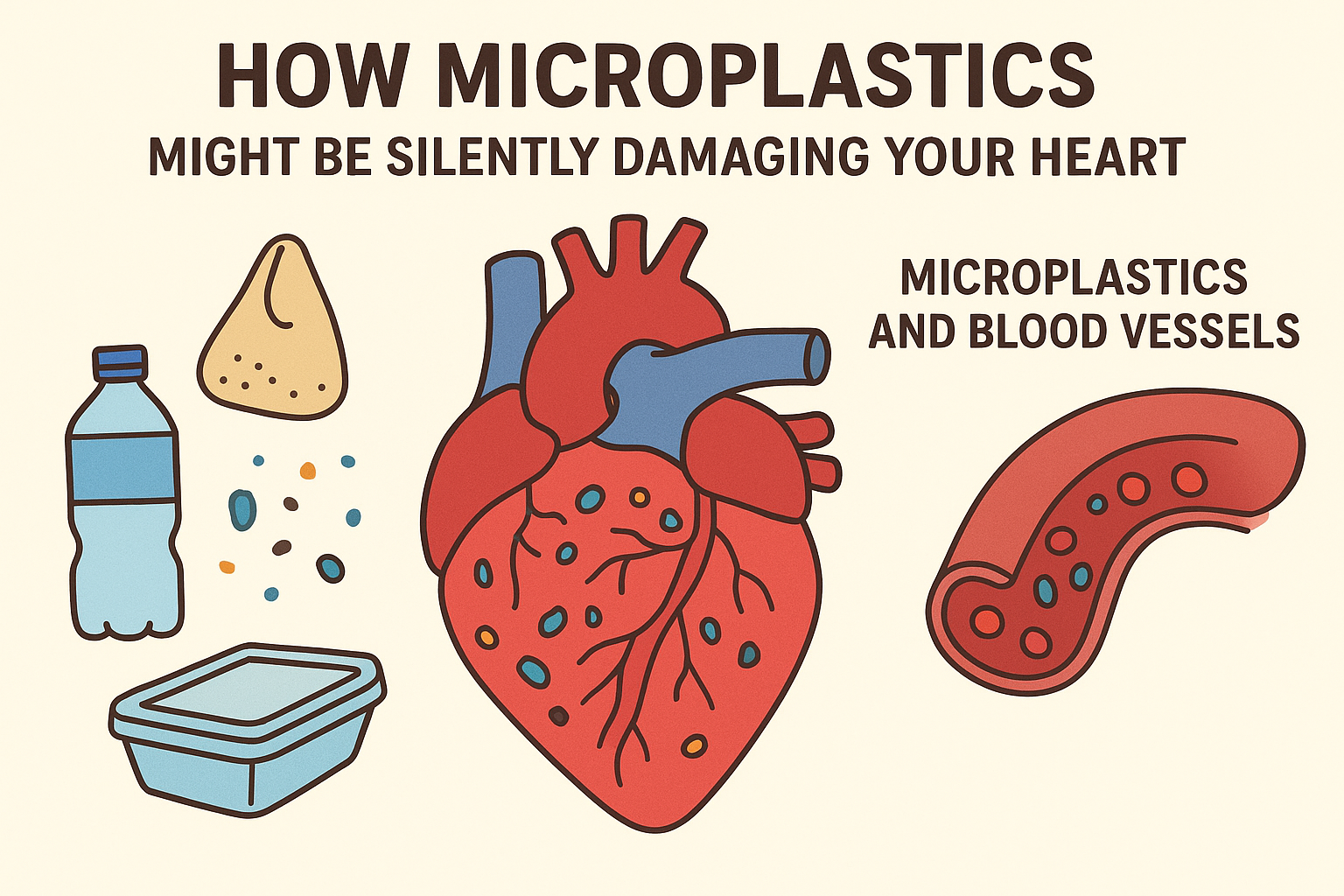The Role of Genetics in Heart Disease

Introduction
Cardiovascular diseases (CVDs) encompass a range of disorders affecting the heart and blood vessels, including coronary artery disease, heart failure, arrhythmias, heart valve disease and hypertension. Traditionally, factors such as poor diet, lack of exercise and smoking have been recognised as major contributors to heart disease. However, genetic predisposition also plays a crucial role, influencing an individual’s susceptibility to these conditions.
With advancements in genomic medicine, there is a growing emphasis on understanding how genetic variations contribute to heart disease and possible complications. This knowledge not only aids in identifying individuals at higher risk but also paves the way for personalized prevention and treatment strategies.
Inherited Heart Conditions
Certain heart conditions are directly linked to genetic mutations passed down through families. These inherited heart conditions can manifest at any age and may lead to severe health outcomes if not identified and managed appropriately.
Familial Hypercholesterolemia (FH)
Familial hypercholesterolaemia (FH) is a common inherited condition caused by a genetic mutation that affects the way your liver processes cholesterol. This mutation reduces your liver’s ability to remove excess low-density lipoprotein (LDL) cholesterol — often referred to as ‘bad’ cholesterol — from your bloodstream. As a result, LDL cholesterol can build up to dangerously high levels, significantly increasing your risk of developing heart and circulatory diseases at an early age if left untreated.
FH is one of the most prevalent inherited conditions, affecting approximately 1 in 250 people. In the UK alone, it’s estimated that around 270,000 individuals have FH, although many remain undiagnosed and unaware of their condition. Early detection and treatment are crucial to reducing the long-term health risks associated with high cholesterol.
Because FH is inherited in an autosomal dominant pattern, there is a 50% (1 in 2) chance of passing it on to your children if you have the condition. Similarly, if one of your parents has FH, there is a 50% chance that you may have inherited it. Identifying FH early through genetic testing and family screening can help prevent the development of serious heart-related complications.
(https://www.bhf.org.uk/informationsupport/conditions/familial-hypercholesterolaemia)
Genetic Basis of Familial Hypercholesterolemia
FH is primarily an autosomal dominant disorder caused by mutations in genes integral to LDL-C metabolism. FH is primarily caused by mutations in specific genes responsible for regulating cholesterol levels, including APOB, LDL-R, and PCSK9. These mutations are inherited in an autosomal dominant pattern, meaning that a person only needs to inherit one faulty copy of the gene from either parent to develop the condition. However, in rare cases where FH is caused by a mutation in the LDL-RAP1 gene (low-density lipoprotein receptor adapter protein 1), the condition follows an autosomal recessive inheritance pattern, requiring two faulty copies of the gene (one from each parent) for the condition to manifest.
FH can also be classified based on genotype, resulting in either the heterozygous or homozygous form of the condition. Individuals with heterozygous FH (inheriting one faulty gene) typically exhibit elevated low-density lipoprotein cholesterol (LDL-C) levels from birth, generally ranging between 8 to 15 mmol/L. In contrast, individuals with homozygous FH (inheriting two faulty copies of the gene) experience significantly higher LDL-C concentrations, often between 12 to 30 mmol/L, leading to a more severe and early-onset form of the disease. Early detection and treatment are critical in both forms to prevent the development of premature cardiovascular disease.
(https://pmc.ncbi.nlm.nih.gov/articles/PMC9692978/)
Genetic testing for Familial Hypercholesterolemia
The first step in finding out whether you have familial hypercholesterolaemia (FH) is to have a cholesterol test. A healthcare professional will also ask about your family’s medical history, specifically whether there have been cases of high cholesterol, heart disease, or early heart attacks among your relatives. This information is important, as FH is an inherited condition that runs in families.
If your cholesterol levels are found to be unusually high, or if your doctor notices any of the physical signs commonly associated with FH, they may refer you to a specialist for further assessment. This assessment is likely to include genetic testing to confirm whether you carry a faulty gene that causes FH. The specialist will also discuss the importance of checking your family members for FH, as early diagnosis is crucial in preventing heart-related complications.
Genetic testing is a straightforward procedure designed to identify changes in your DNA that may cause inherited conditions like FH. The test is typically done using either:
- A blood sample, or
- A mouth swab, where a sample is taken from the inside of your cheek.
If you are diagnosed with FH, it’s important that your close family members — including your parents, siblings, and children — are tested as well. Since FH is inherited in an autosomal dominant pattern, there is a 50% (1 in 2) chance that a child of an affected parent will also have the condition. Early identification can ensure they receive treatment to lower their cholesterol and reduce their risk of developing heart disease.
Likewise, if a family member is diagnosed with FH, you should get tested as soon as possible. Early diagnosis and intervention can make a significant difference, allowing you to take steps to manage your cholesterol through medication, lifestyle changes, and ongoing medical care. Detecting FH early helps protect your long-term heart health and prevent serious cardiovascular problems.
(https://www.bhf.org.uk/informationsupport/conditions/familial-hypercholesterolaemia)
Clinical Presentation and Diagnosis
FH is often asymptomatic until cardiovascular complications arise. Clinical indicators include tendon xanthomas, arcus corneae, and a family history of premature coronary artery disease. Diagnostic criteria, such as the Dutch Lipid Clinic Network or Simon Broome criteria, incorporate these clinical features alongside lipid profiles and genetic testing to ascertain the likelihood of FH. Simon Broome criteria are total cholesterol of 7.5 mmol/L or greater and an LDL cholesterol of 4.9 mmol/L or greater with triglyceride levels below 5 mmol/L.
Hypertrophic Cardiomyopathy (HCM).
Hypertrophic cardiomyopathy (HCM) is a genetic cardiac disorder characterized by the thickening of the heart muscle, particularly the left ventricle, leading to impaired cardiac function and possible abnormal heart beats.
About 1 in 500 of the UK population is affected by HCM.
(https://www.bhf.org.uk/informationsupport/conditions/hypertrophic-cardiomyopathy)
Hypertrophic cardiomyopathy (HCM) is an autosomal dominant heart muscle disorder caused by mutations in genes encoding sarcomere or sarcomere-associated proteins, which are essential for the heart’s contractile function. This genetic abnormality leads to structural changes in the heart, most notably increased left ventricular wall thickness (hypertrophy). The resulting pathophysiological consequences may include dynamic left ventricular outflow tract obstruction, diastolic dysfunction, myocardial ischemia, arrhythmias, autonomic dysfunction, and mitral regurgitation.
Approximately 60% of individuals with HCM have a detectable genetic mutation affecting sarcomere or related proteins, underscoring the importance of obtaining a detailed family history to assess genetic risk and guide management. In addition to genetic evaluation, a comprehensive clinical history and physical examination are crucial for identifying individuals at high risk for malignant heart beats. The structural and functional abnormalities seen in HCM can manifest as fatigue, dyspnea, chest pain, palpitations, or syncope.
Advances in early diagnosis and management have significantly improved survival outcomes in patients with HCM. Treatment strategies may include pharmacologic therapy, implantable cardioverter-defibrillator (ICD) placement, or surgical interventions such as septal myectomy when indicated. Prompt identification and personalized management are essential for reducing morbidity and mortality associated with this condition.
(https://www.ncbi.nlm.nih.gov/books/NBK430788/)
Genetic Basis of HCM
Familial HCM occurs in approximately 60% of cases as an autosomal dominant Mendelian-inherited disorder. However, incomplete penetrance and variable expression can lead to unpredictable clinical presentations, even among family members. In individuals with HCM and a confirmed pathogenic sarcomeric gene variant, the two most commonly affected genes are β-myosin heavy chain 7 (MYH7) and myosin-binding protein C3 (MYBPC3), collectively accounting for around 75% of genetically positive cases. Less frequently, mutations in thin filament proteins such as troponin T, troponin I, myosin light chains, and actin (genes: TNNI3, TNNT2, TPM1, MYL2, MYL3, ACTC1) are identified, representing 1% to 5% of cases. To date, over 1500 genetic variants associated with HCM have been discovered, most of which are unique to each family. However, no clear correlation has been established between specific gene mutations and clinical prognosis.
A significant proportion of HCM cases, up to 40% in some studies, occur without any identifiable genetic mutation or family history—referred to as non-familial HCM. This suggests the existence of alternative, yet undiscovered, pathophysiological mechanisms contributing to disease development. Recent evidence also implicates abnormal myocardial calcium kinetics in promoting inappropriate myocardial hypertrophy and diastolic dysfunction, particularly in patients without clear genetic mutations. Further research is needed to fully understand these alternative mechanisms and their role in HCM pathology.
(https://www.ncbi.nlm.nih.gov/books/NBK430788/)
Dilated cardiomyopathy (DCM).
Dilated cardiomyopathy (DCM) is a heart disease associated with a dilation and impaired contraction of the left or both ventricles, leading to systolic dysfunction and, often, heart failure. While various factors such as infections, toxins, and metabolic conditions can cause DCM, a proportion of cases have a genetic basis. Understanding the genetic predisposition to DCM is important for early diagnosis, personalised treatment, and familial screening. This pump dysfunction cannot be attributed to other heart conditions such as hypertension, significant valvular disease, or coronary artery disease. DCM is a relatively common condition, affecting an estimated 1 in 250 people in the general population. Despite significant advancements in heart failure management over recent decades, mortality rates associated with DCM remain high, and it remains one of the leading indications for heart transplantation worldwide.
The primary causes of mortality in DCM patients include progressive heart failure (pump failure) and sudden cardiac death (SCD) resulting from life-threatening arrhythmias. However, recent research has revealed that many individuals with DCM exhibit subtle structural cardiac abnormalities and arrhythmogenic phenotypes long before the onset of overt heart failure symptoms. This has presented new diagnostic and management challenges, as these subtle abnormalities may mimic other cardiac conditions, making accurate diagnosis difficult. Additionally, some DCM patients are at a significantly higher risk of developing malignant arrhythmias such as high-grade atrioventricular block, ventricular tachycardia, or ventricular fibrillation, while others demonstrate a poorer response to standard heart failure therapies with limited reverse remodelling of the heart.
Identifying patients at increased risk of arrhythmic events or disease progression is essential for tailoring appropriate treatment strategies, improving clinical outcomes, and reducing mortality. As a result, there is a growing emphasis on early and accurate diagnosis of DCM, coupled with risk stratification to identify individuals who may benefit from advanced therapies such as implantable cardioverter-defibrillators (ICDs), cardiac resynchronization therapy (CRT), or heart transplantation. Developing more refined approaches to predict disease progression and response to therapy is critical in improving long-term survival rates and quality of life in patients with DCM.
(https://pmc.ncbi.nlm.nih.gov/articles/PMC10044994/)
Genetic Predisposition to Dilated Cardiomyopathy
DCM is a highly heterogeneous condition with a wide range of underlying causes, including both genetic and acquired factors. Research shows that a positive family history is present in approximately 30–50% of DCM cases, and a definitive genetic mutation can be identified in around 40% of patients. In familial cases of DCM, the most commonly implicated genetic abnormalities involve sarcomeric proteins, neuromuscular disorders, and mitochondrial dysfunctions. These inherited forms of DCM often follow an autosomal dominant pattern, although some cases may result from autosomal recessive, X-linked, or mitochondrial inheritance.
As already mentioned, in addition to genetic factors, non-genetic causes of DCM are also significant and include a broad range of external triggers such as viral or non-viral infections, autoimmune diseases, toxic exposures (such as alcohol, chemotherapy, or recreational drugs), infiltrative diseases, nutritional deficiencies, and endocrine disorders. Other common contributing factors include pregnancy-associated cardiomyopathy, sustained arrhythmias, diabetes, and myocarditis, all of which can lead to the development or progression of DCM. These acquired conditions may either directly cause DCM or act as disease modifiers, significantly influencing disease progression and clinical outcomes.
Recent research has placed increasing focus on the complex interaction between genetic predisposition and environmental or acquired triggers, as it has become clear that external factors can heavily influence the phenotypic expression of a genetic mutation. This gene-environment interaction has led to the concept of two-hit or multi-hit mechanisms, where a genetic mutation may remain dormant until triggered or exacerbated by environmental stressors such as viral infections, cardiotoxic drugs, or metabolic stress. This insight highlights the importance of a comprehensive clinical evaluation that considers both genetic and non-genetic factors to improve diagnostic accuracy and optimize treatment strategies.
Understanding the interplay between genetic mutations and environmental triggers may also pave the way for personalized medicine approaches in DCM, allowing for targeted therapies based on a patient’s genetic profile and individual risk factors. This approach could improve early diagnosis, enhance risk stratification, and ultimately lead to better patient outcomes.
(https://pmc.ncbi.nlm.nih.gov/articles/PMC10044994/)
Conclusion
The role of genetics in heart disease is multifaceted, encompassing inherited conditions, genetic predispositions to common cardiovascular diseases, and the potential for personalised medicine through genetic testing. As research advances, our understanding of the genetic factors influencing heart disease continues to deepen, offering new strategies for prevention, diagnosis, and treatment. However, it would be important to approach genetic information with careful consideration, ensuring that individuals receive appropriate counselling and support to make informed decisions about their health and long term wellbeing.
Incorporating genetic testing into routine clinical practice holds promise for reducing the burden of cardiovascular diseases. By identifying individuals at high genetic risk, healthcare providers can implement targeted interventions, potentially improving outcomes and reducing healthcare costs. As the field of genomics evolves, ongoing research and collaboration will be essential to fully harness the potential of genetic information in combating heart disease.
===========================================================================
Dr Bart Olechowski sees private cardiology patients with heart problems symptoms in his clinics, which are located in Winchester at Sarum Road Hospital, in Basingstoke at Candover Clinic and in Farnham at Spire Clare Park Hospital. Heart consultations include diagnoses of high blood pressure, elevated cholesterol levels, angina, heart failure, heart beat problems and heart valve disease. Amy Rossiter, Dr Bart`s medical secretary can be contacted on 07984 245 550 or via an email pa@drbart.co.uk. Additional blog posts can also be found on our www.drbart.co.uk website, where Dr Bart writes regular blog posts.











